Hardy Perennial Vines: Fast-Growing Perennial Vines For The Landscape
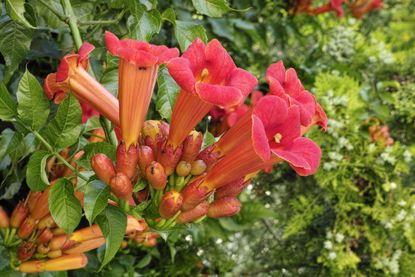

Perennial flowering vines are functional as well as beautiful. They soften the look of the landscape and protect your privacy while hiding unsightly views. Most perennial vines are rampant, vigorous plants that quickly cover a structure fairly quickly.
Fast-Growing Perennial Vines
If you need quick cover for a fence, trellis or wall, choose one of these fast-growing perennial vines:
- Chocolate vine - Chocolate vine (Akebia quinata) is a deciduous perennial vine that rapidly grows to a length of 20 to 40 feet (6 to12 m.). The small, brownish-purple flowers and 4-inch (10 cm.) purple seed pods are often hidden among the dense vegetation, but you'll enjoy the fragrance whether you can see the flowers or not. Chocolate vines spread very quickly and scramble over anything in their path. They need regular pruning to keep the growth under control. Grow chocolate vine in sun or shade in USDA zones 4 through 8.
- Trumpet creeper - Trumpet creeper (Campsis radicans) provides quick coverage for any type of surface. The vines grow to 25 to 40 feet (7.6 to12 m.) in length and bear large clusters of orange or red, trumpet-shaped flowers that hummingbirds find irresistible. The vines prefer full sun or partial shade and are hardy in zones 4 through 9.
Perennial Vines for Shade
Most perennial flowering vines prefer a sunny location, but many vines will thrive in shade or partial shade, making them ideal for woodland areas and weaving through shrubs. Try these perennial vines for shade:
- Carolina moonseed - Carolina moonseed (Cocculus carolinus) doesn't grow as fast as most other perennial vines, which means it will require less maintenance. It grows 10 to 15 feet (3 to 4.5 m.) tall and bears small, greenish-white, summer flowers. Bright red, pea-sized berries follow the flowers. Each berry contains a crescent-shaped seed that gives the plant its name. Carolina moonseed is hardy in zones 5 through 9.
- Crossvine - Crossvine (Bignonia capreolata) tolerates dense shade but you'll get more flowers in partial shade. Clusters of fragrant, trumpet-shaped flowers hang from the vine in spring. The vigorous vines, which can grow 30 feet (9 m.) long or more, need regular pruning to maintain a neat appearance. Cross vine is hardy in zones 5 through 9.
- Climbing hydrangeas - Climbing hydrangeas (Hydrangea anomala petiolaris) produce flowers even more spectacular than shrub-type hydrangeas on vines that grow up to 50 feet (15 m.) tall. The vines start growing slowly, but they are worth the wait. Perfect for full or partial shade, climbing hydrangeas are hardy perennial vines that tolerate temperatures as cold as zones 4.
Hardy Perennial Vines
If you are looking for vines that are perennial in areas with cold winter, try these hardy perennial vines:
- American bittersweet - American bittersweet (Celastrus scandens) survives winters in zones 3 and up. The vines grow 15 to 20 feet (4.5 to 6 m.) long and bear white or yellowish flowers in spring. If there is a male pollinator nearby, the flowers are followed by red berries. The berries are toxic to humans but a treat for birds. American bittersweet needs full sun and a well-draining soil.
- Woodbine - Woodbine, also known as Virgin's Bower clematis (Clematis virginiana), produces large clusters of fragrant, white flowers, even in dense shade. Without support, woodbine makes a terrific ground cover, and with support it grows quickly to a height of 20 feet (6 m.). It is hardy in zones as cold as 3.
Gardening tips, videos, info and more delivered right to your inbox!
Sign up for the Gardening Know How newsletter today and receive a free download of our DIY eBook "Bring Your Garden Indoors: 13 DIY Projects For Fall And Winter".

Jackie Carroll has written over 500 articles for Gardening Know How on a wide range of topics.
-
 Proven Health Benefits Of Gardening – Why It’s Good To Get Your Hands Dirty
Proven Health Benefits Of Gardening – Why It’s Good To Get Your Hands DirtyThere are so many health benefits of gardening for every age and ability level, it may hold the key to many of the world’s problems. Learn about the ways gardening can improve your life.
By Amy Grant
-
 Get Gardening For Better Sleep: Why Gardens And Plants Can Give You Happier Bedtimes
Get Gardening For Better Sleep: Why Gardens And Plants Can Give You Happier BedtimesWe all know gardening is intrinsically linked to a ‘feel good’ factor – have you ever wondered why it helps with rest? Here’s the thinking behind gardening for better sleep…
By Mary Ellen Ellis
-
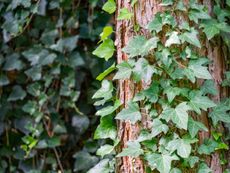 7 Invasive Vines To Avoid In Your Yard And Garden
7 Invasive Vines To Avoid In Your Yard And GardenWhat are some common invasive vines to avoid in your yard and garden spaces? Click here to find out.
By Susan Albert
-
 Fragrant Climbing Vines For Arbors And Trellises
Fragrant Climbing Vines For Arbors And TrellisesAdding fragrant climbing vines to the landscape adds a sense of height and olfactory pleasure! Climbing vines make your space more lush, interesting, and vibrant.
By Tonya Barnett
-
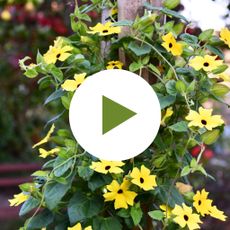 10 Flowering Vines With An Extended Bloom Season
10 Flowering Vines With An Extended Bloom SeasonWhether you’re short on space, need to add privacy or hide unsightly views, take advantage of your vertical space with flowering vines.
By Amy Draiss
-
 Queen’s Wreath Info – Learn About Growing Queen’s Wreath Plants
Queen’s Wreath Info – Learn About Growing Queen’s Wreath PlantsFor a touch of the tropics in your landscape, try growing queen’s wreath vine. The following gives information on how to grow and care for the vine.
By Amy Grant
-
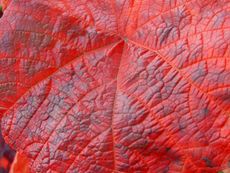 Crimson Glory Grapevines – Growing A Crimson Glory Vine Plant
Crimson Glory Grapevines – Growing A Crimson Glory Vine PlantAlso known as Crimson Glory grapevines, the Crimson Glory vine plant is actually an ornamental type of grape. Read on for more info.
By Tonya Barnett
-
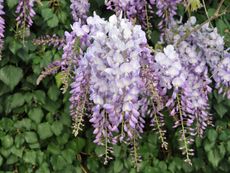 What Are Deciduous Vines: Growing Deciduous Vine Varieties In Gardens
What Are Deciduous Vines: Growing Deciduous Vine Varieties In GardensDeciduous vine care may be a bit more difficult than hardy evergreens but will be worth it when they come back in spring. Click here for more info.
By Bonnie L. Grant
-
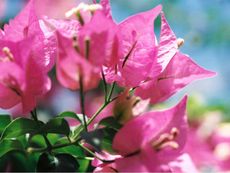 Vines For Full Sun Locations: Growing Vines That Like Sun
Vines For Full Sun Locations: Growing Vines That Like SunTrailing vines that like full sun can grow up a fence, trellis, or an arbor with various purposes in the landscape. Find some full sun vines here.
By Becca Badgett
-
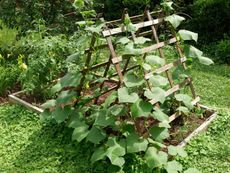 Different Trellis Types: Tips For Using Trellising In Gardens
Different Trellis Types: Tips For Using Trellising In GardensMaybe you confuse a trellis with a pergola, which is easy to do. If you’ve wondered exactly what a trellis is, click here to get more info.
By Becca Badgett